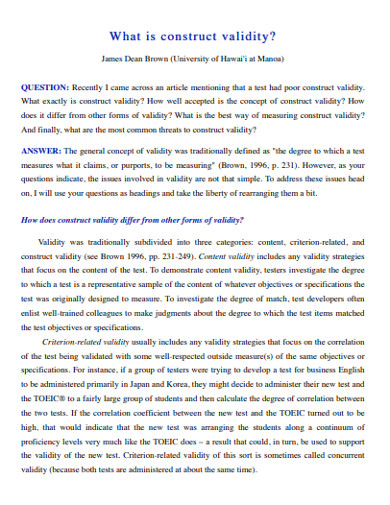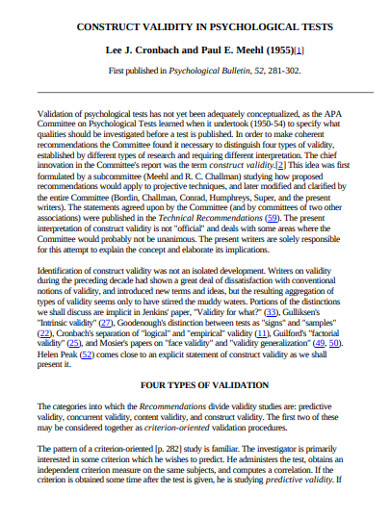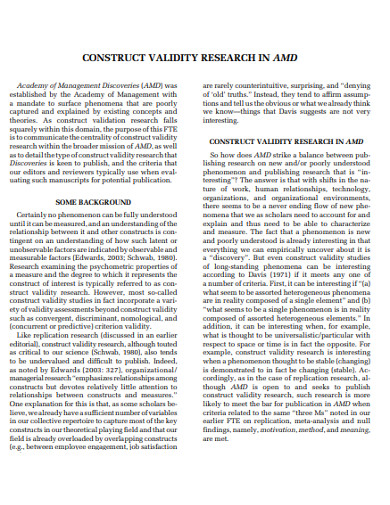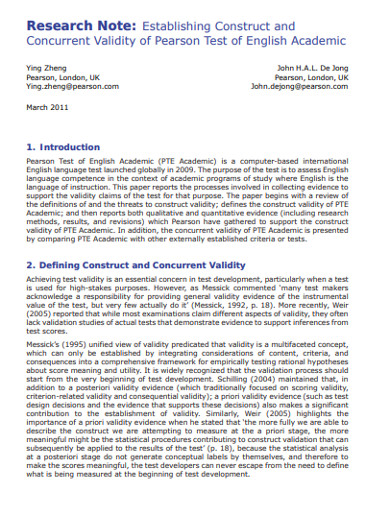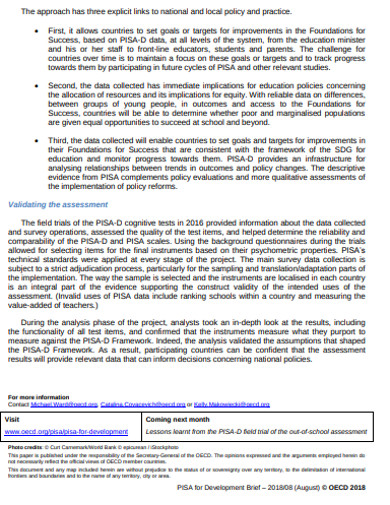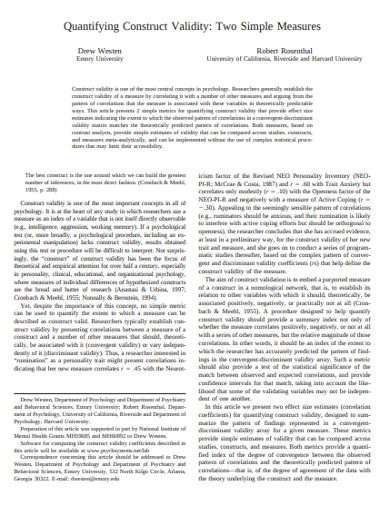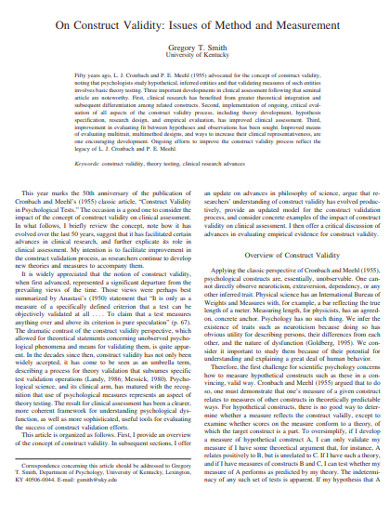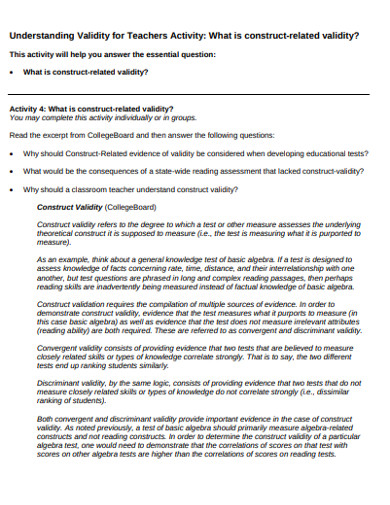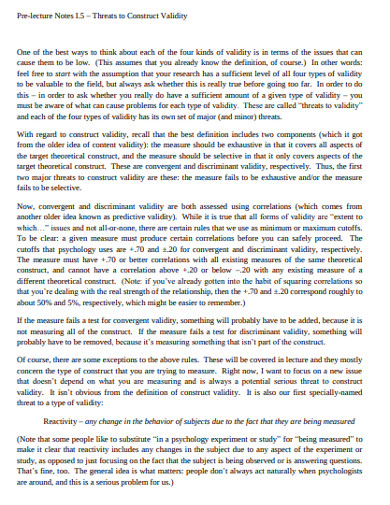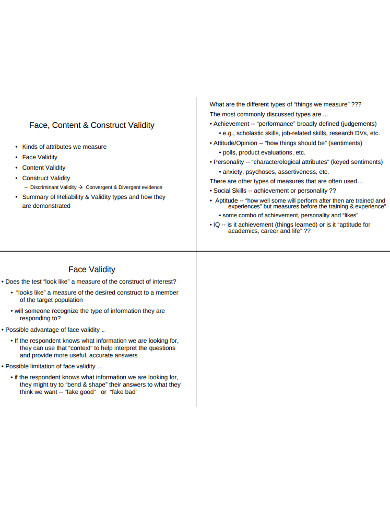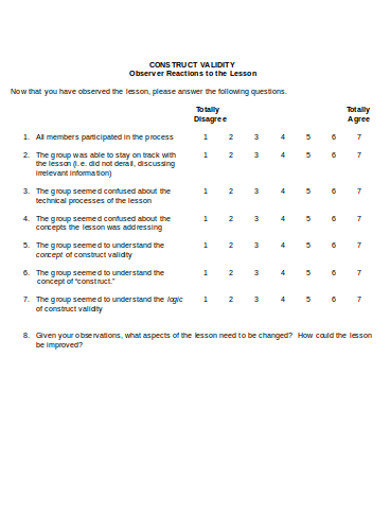10+ Construct Validity Examples to Download
How do researchers validate the efficiency of an experiment tool? The scientists from the earlier century have been trying to come up with ways to do it. As a result, various validity methods were invented, such as face validity, intrinsic validity, empirical validity, logical validity, content validity, and many more. The people at the time have not figured out which qualities of the experiment tools to measure. Thus, people only used a handful of these validity methods until the middle of the 1950s, the time when the APA Committee on Psychological Tests addressed the issues surrounding the validations in psychological experiments. During this time, Lee Cronbach, along with Paul Meehl, devised Construct Validity.
What is Construct Validity?
Construct validity is a method to know how well a test measures its scope, which is the theoretical construct. A theoretical construct refers to a conceptual idea that we cannot observe directly. However, we can understand this phenomenon by making observations. For example, during a class examination, you can find that your seatmate is fidgeting and sweating. You can also see the person bite his lips from time to time. Thus, you can infer that he is experiencing exam stress, which is an example of a construct. Its natural characteristics make this type of validity a crucial method in the field of Psychology. To measure the construct validity of a test, you will use its two subsets, which are the discriminant and convergent validity. You can also apply construct validity in research such as quantitative research since this research uses multiple factor analysis to gauge the constructs such as perspectives, knowledge, and habits. To validate these tests, you will use construct validity.
Six Aspects of Construct Validity
As part of the ongoing enhancement of the construct validity process, Samuel Messick presented a structure that will connect all forms of validity. This unified theory of construct validity consists of the following aspects.
1. Significant
Are there anticipated risks of coming up with unreasonable and incorrect interpretations? If yes, would the test be still valuable?
2. Content
Does the subject, which is the studied test, appears to measure the construct it supposes to test?
3. Substantive
Is the test in question uses the correct actions? To determine if it indeed takes the right steps, you have to compare this test to a similar experiment.
4. Structural
Determine the qualities of the test that you are measuring. Do the conditions coincide with the test scores? Are you asking the right question?
5. External
In the external aspect, you have to conduct the subsets of construct validity. These validations will allow you to determine if the test in interest have convergent, discriminant, and predictive qualities.
6. Generalizability
Does the test produce predictive data?
10+ Construct Validity Examples
You can implement construct validity in your research project, just like the following examples. Download the following documents to get a better understanding of construct validity application.
1. Sample Construct Validity Example
2. Construct Validity in Psychological Test Example
3. Construct Validity in Research Example
4. Construct and Concurrent Validity Example
5. Construct Development Validity Example
6. Quantifying Construct Validity Example
7. Construct Validity and Measurement Example
8. Construct Validity for Teachers Activity Example
9. Printable Construct Validity Example
10. Content and Construct Validity Example
11. Construct Validity in DOC
How to Avoid with Construct Validity Threats?
Refrain from creating a misleading construct validity by avoiding the threats that may affect the outcome of your project. Below are the steps that can help you prevent the said threats.
1. Don’t Let the Candidates Know the Desired Result
If the participants are aware of the desired outcome of the study, there is a high possibility that they will act with the desired outcome in mind. As a result, the data you will get can be inaccurate. Thus, it is crucial to plan your research methodology to ensure that you will get the most accurate data.
2. Avoid Bias Experimental Design
For example, your research question is measuring the intelligence of students of various courses, and your question is about the benefits of using an MVC framework in web development. Obviously, the people who are taking the relevant course will get the highest score. As a researcher, you should design your research questionnaires without a bias, intentional or not, to get the most accurate data.
3. Consider All the Affecting Factors
While it is good to be specific in formulating a research question in some types of research, you should ensure that it does not affect the quality of your project. For example, you want to measure the happiness of the people living in a particular city. You should know that there are many affecting factors to consider in determining the happiness level of a person. Don’t just use job satisfaction alone.
4. Use Blind Experiment
To ensure the success of a research, avoid giving information that can affect the data you will get for the study. However, you should also be careful when carrying out a blind experiment, especially for clinical research. Make sure that you master the research ethics to avoid any issues with the affecting parties.
To improve the system that we use in various fields, the experts continuously uncover more effective ways to get things done. External validity, predictive validity, internal validity, and other construct related validity methods are among these discoveries. In the future, they may make adjustments to these designs or make them vanish. Whatever their fate is, it will be for the betterment of the systems that we use.



